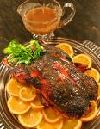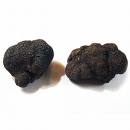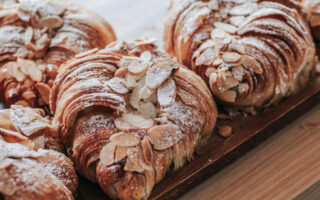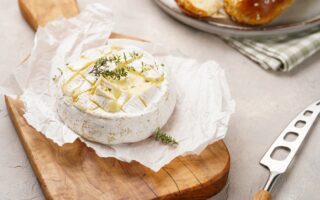Food and Drink in the Dordogne


Much has been written about great food and wine in France and specifically from the Dordogne, famous for a cuisine rich in produce unique to the area. Think of good wine, foie gras, duck and goose, ceps and walnuts and you have the basis for some superb dishes and memorable meals.
The whole of the Dordogne abounds with places to eat and you will never be far from something to suit both your taste buds and your pocket. Needless to say it is not all French haute-cuisine – as good as that is, there are many other choices from the fast food outlets providing ‘basic, food like burgers and pizzas to ‘ethnic’ restaurants such as Moroccan, Indian, Chinese and Japanese to mention only a few.
It may only be imagination, but is there a difference even in these restaurants because of the French influence? With such a general interest and passion for eating out; it is the way of life, has the 2 hour lunch and family meals combined to contribute to a higher standard generally? Certainly, the best burgers I’ve eaten have been made and served in France?
It is true that very little of nature’s bounty is wasted and every scrap(!) of every creature has a recipe and if you can suspend judgement and try it, it is very likely that you will soon wonder what they do with all the bits in Britain. For example, ‘abats de canard confits’ – fabulous sautéed on a warm salad, drizzled with a little walnut oil and other dressings. Great lunch with a light wine, so tasty and moreish but duck gizzards nevertheless! Best not to ask, just enjoy.
Try to join the locals and aim for restaurants frequented by them, the menu will be in French which is the clue and, generally speaking, the best ones are not located in major tourist areas. If you are doing the tourist bit then basic stuff like pizzas, and crêpes might be the best option and move on when you are ready to dine. It is cheaper to eat at lunchtime and in the week, Sunday lunch is a major event and so will be busy and therefore it is advisable to book. Menu prix fixe will often have the same choice as à la carte but be cheaper as will wine by the carafe or house wine by the bottle; the house choices are selected by enthusiastic and dedicated owners and will be of good value and quality.
The Dordogne region has its fair share of Les Routiers these are restaurants/bistros that literally provide food for truck drivers and have done since the system and guide were created in 1934. Designed to provide drivers with a good, basic meal they are now synonymous with good quality and great value. For around 10 -12€, often including some wine, expect 4 or 5 courses, we had soup, fish, meat, cheese and dessert with coffee as an extra. The meal was very good and we shared with a variety of friendly truck and van drivers who were very good company, very welcoming and very discerning.
Although food is good in France it isn’t all an idyllic world, prices are not significantly cheaper than the UK, for example, meat is the same price if not more expensive particularly beef. Red meat tends not to be hung before butchery and so tenderness for some cuts is reduced, however slow cooking fixes that. What is significant is that the cuts and combinations on offer are different and so be prepared to adapt if you are doing the cooking.
 Back to the specialities of the region – Foie Gras, literally means fat liver, having said that it’s a delicacy and it is treated as a major treat. You will see signs everywhere for farm sales and shop sales, all accompanied by a variety of visual treatments depicting a happy goose and appearing beside the roads and outside of shops. Anything to do with geese or ducks (including gizzards) is on sale in shops, supermarkets and is always somewhere on the menu in all classes of restaurants – it comes tinned, frozen or fresh – and is good!
Back to the specialities of the region – Foie Gras, literally means fat liver, having said that it’s a delicacy and it is treated as a major treat. You will see signs everywhere for farm sales and shop sales, all accompanied by a variety of visual treatments depicting a happy goose and appearing beside the roads and outside of shops. Anything to do with geese or ducks (including gizzards) is on sale in shops, supermarkets and is always somewhere on the menu in all classes of restaurants – it comes tinned, frozen or fresh – and is good!
 The entire region is almost literally covered in walnut trees in growing in serried rows, neatly delineating fields, and cosseted with irrigation systems and then harvested by shaking machines in the early autumn. Offered ‘fresh’ as wet walnuts and throughout the winter as ordinary nuts-in-the-shell, the French don’t stop there, but make super oil used for salads and cooking, and also a range of alcoholic beverages including some rather delectable liqueurs.
The entire region is almost literally covered in walnut trees in growing in serried rows, neatly delineating fields, and cosseted with irrigation systems and then harvested by shaking machines in the early autumn. Offered ‘fresh’ as wet walnuts and throughout the winter as ordinary nuts-in-the-shell, the French don’t stop there, but make super oil used for salads and cooking, and also a range of alcoholic beverages including some rather delectable liqueurs.
 Where there be oak trees, there be truffles! – and also ceps and mushrooms, the Dordogne is also covered in oaks as well as walnut trees so there are lots of these wonderful fungi. This delightful bounty is a major contributor to the economy as well as to cuisine in general, giving smell, flavour and texture to a variety of foods. In the countryside you can walk across peoples land and no-one really minds, there is little fixation with fences but, beware the person who contemplates helping themselves to the owners fungi when in season. This is one crop that is taken seriously with major markets held in October and November throughout the region and serious money changing hands particularly for truffles.
Where there be oak trees, there be truffles! – and also ceps and mushrooms, the Dordogne is also covered in oaks as well as walnut trees so there are lots of these wonderful fungi. This delightful bounty is a major contributor to the economy as well as to cuisine in general, giving smell, flavour and texture to a variety of foods. In the countryside you can walk across peoples land and no-one really minds, there is little fixation with fences but, beware the person who contemplates helping themselves to the owners fungi when in season. This is one crop that is taken seriously with major markets held in October and November throughout the region and serious money changing hands particularly for truffles.
Share to: Facebook Twitter LinkedIn Email
More in cooking, countryside, courses, food, guides, markets, wine
By FrenchEntrée
Leave a reply
Your email address will not be published. Required fields are marked *



